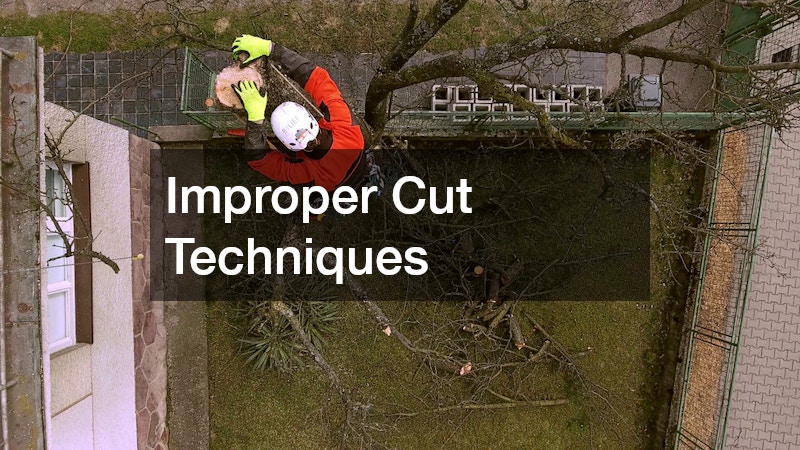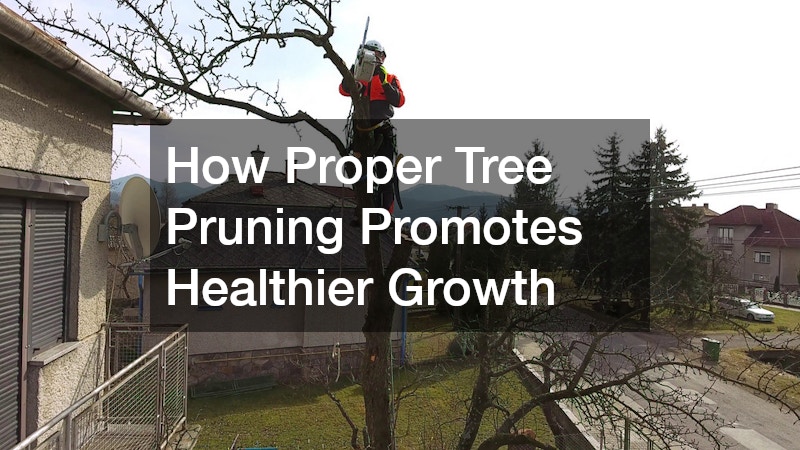Understanding how proper tree pruning can significantly enhance tree health and promote robust growth is crucial for anyone interested in maintaining a vibrant landscape. Pruning is not just about keeping trees visually appealing; it has profound implications for tree vitality. By removing dead or diseased branches, the tree can focus its energy on new growth, leading to more vigorous and healthier trees over time.
How Tree Pruning is Important for Tree Health
Benefits of Regular Pruning
Regular pruning is essential for sustaining trees’ health by preventing diseases. It helps by removing branches that could become infected and spread ailments throughout the tree. Furthermore, pruning enhances the tree’s growth structure, allowing for more light and air penetration, which is beneficial for the overall health of the tree.
A well-pruned tree not only grows more symmetrically but also develops stronger roots and shoots. This process enables the plant to withstand adverse weather conditions better, such as storms and strong winds. In urban settings, where trees face numerous anthropogenic stresses, pruning becomes an important tool for sustaining tree health.
Additionally, the aesthetic appeal of a regularly pruned tree can enhance property values and contribute to psychological well-being. The removal of dead or congested branches also reduces the risk of breakage and potential damage to nearby structures or injuries to people. These issues highlight the preventive role that regular pruning plays in maintaining a healthy environment.
Impact on Lifespan and Vitality
Consistent pruning efforts can significantly extend a tree’s lifespan and maintain its vitality. By focusing the tree’s energy on developing robust and healthy branches, pruning effectively rejuvenates the tree. Over time, this concentrated growth effort reduces vulnerabilities to diseases and pest invasions.
Pruning not only extends the longevity of individual trees but also enhances the stability of entire ecosystems. Healthy trees contribute more to their environments by providing habitat, sequestering carbon, and producing oxygen. The benefits of maintained tree vitality extend far beyond their own lifespan, impacting broader ecological and human communities.
Moreover, a tree’s structural integrity is enhanced through careful pruning, making it less prone to falling or dropping branches in heavy winds or storms. This not only protects the tree itself but also safeguards surrounding plants and structures. As the tree ages, its continued vigor is a testament to the cumulative benefits of routine pruning interventions.
The Best Practices for Pruning Trees
Timing and Seasonality
Timing is everything when it comes to pruning, as cutting during the wrong season can adversely affect a tree’s growth. Most trees benefit from being pruned during their dormant season, usually late winter, as this minimizes stress. However, for flowering species, pruning right after their blooming period is recommended to encourage future flower production.
The specific timing can vary based on the tree species as well as local climate conditions. For instance, many evergreens respond best to pruning in early spring, while deciduous trees often do well with late winter pruning. Understanding these nuances is important for maximizing the effectiveness of your pruning efforts.
Tools and Techniques
Using the right tools and techniques for pruning is key to promoting healthy tree growth. Essential tools include hand pruners for small branches, loppers for medium-sized limbs, and pruning saws for larger branches. Each tool serves specific purposes, and using them correctly can enhance the pruning process.
Sharp, clean tools are critical as dull or dirty implements can cause unnecessary damage to the bark and tree structure. Additionally, understanding proper cutting techniques, such as making cuts at a slight angle and just above a bud or branch collar, helps in promoting quick healing and minimizes stress on the tree. Avoiding ragged cuts ensures that the tree efficiently seals the wound, reducing exposure to pathogens.
Common Mistakes to Avoid When Pruning
Over-Pruning and Under-Pruning
Both over-pruning and under-pruning can have detrimental effects on tree health. Over-pruning removes too much of the tree’s canopy, reducing its ability to photosynthesize and causing undue stress. Alternatively, under-pruning fails to address aspects like the removal of diseased or damaged wood, leading to longer-term health issues.
Excessive pruning can result in a phenomenon known as “water sprouting,” where rapid, weak growth occurs as the tree tries to recover lost foliage. These sprouts can then become prone to disease and pest attacks, further compromising tree strength. On the other hand, insufficient pruning can lead to overcrowding, poor air circulation, and a compact, weak branch structure.
Improper Cut Techniques
Improper cutting techniques can cause unnecessary harm to a tree and impede its growth. Incorrect cut placement can lead to delayed healing, leaving the tree susceptible to disease and insect infestation. Making cuts incorrectly, such as flush cuts that remove the branch collar, can weaken the tree’s ability to seal the wound effectively.
Cuts that are too far from the branch collar can leave behind stubs that rot, potentially spreading decay into the tree. The process of healing begins at the branch collar, where tissues naturally form a protective barrier; hence, cuts should always be just outside this area. Using the proper angle and clean cuts ensures that tree wounds heal quickly and robustly.
Proper tree pruning is a vital horticultural practice that can significantly enhance the health and growth potential of trees. Through precise techniques and timing, pruning not only promotes stronger, more resilient growth but also extends the lifespan of your trees. As caretakers of our environment, engaging in responsible tree pruning activities supports biodiversity and offers aesthetic and ecological benefits that contribute to a richer, healthier landscape.


